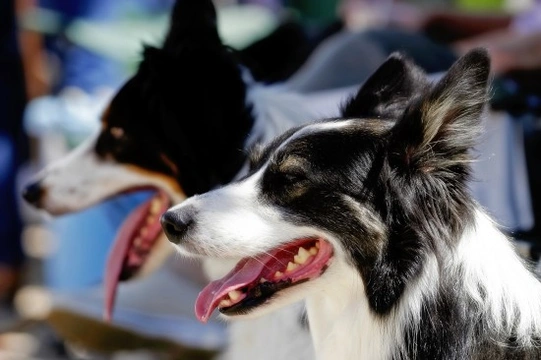
Heatstroke in Dogs: How to Keep Your Dog Safe This Summer
Heatstroke and overheating are serious risks for dogs during the hot summer months in the UK. Dogs regulate their temperature differently from people, making them vulnerable to the dangers of excessive heat. This guide provides essential information on how dogs keep cool, common causes of heatstroke, how to prevent it, symptom recognition, and what to do in an emergency to protect your beloved canine companion.
How Do Dogs Keep Themselves Cool?
Unlike humans, dogs do not sweat all over their bodies. Instead, they mainly cool down by panting, which helps evaporate moisture from their tongues and respiratory tract, lowering their core temperature. Some sweat glands exist on their paw pads, but this contributes very little cooling. Hydration through drinking water also plays a key role in helping dogs manage heat.
Common Causes and Risk Factors for Heatstroke
Heatstroke occurs when a dog cannot effectively regulate or reduce its body temperature. This can quickly become life-threatening. Common causes include:
- Exercising too vigorously in hot weather or during peak sunlight hours
- Insufficient water intake leading to dehydration
- Prolonged exposure to direct sunlight without access to shade
- Being muzzled or otherwise prevented from panting properly
- Being left enclosed in hot vehicles or small spaces lacking ventilation
Certain dogs are especially susceptible, such as those that are overweight, have thick or double coats, or short noses typical of brachycephalic breeds like pugs and bulldogs. Dogs with light-coloured fur or pink skin may also be prone to sunburn, which can worsen heat sensitivity.
Preventing Heatstroke: Practical Tips for Keeping Your Dog Safe
Taking active steps to prevent heatstroke is vital for responsible dog ownership during warm weather. Here are key precautions:
- Exercise your dog only during the cooler parts of the day such as early morning or late evening to avoid the sun's peak heat
- Always provide easy access to fresh, cool water both indoors and outdoors
- Never leave your dog unattended inside parked cars, sheds, or confined spaces on warm days
- Ensure shaded areas are readily available outdoors where your dog can rest and cool down
- Consider summer grooming or clipping for dogs with thick coats but avoid shaving double-coated breeds entirely, as their coat helps regulate temperature
- Use pet-safe sunblock on vulnerable areas like ears, nose, and belly of dogs prone to sunburn
- Take extra precautions with brachycephalic or older dogs, limiting their exposure to heat and monitoring their condition closely
Recognising Symptoms of Heatstroke in Dogs
Early recognition of heatstroke symptoms can save your dog's life. Watch out for signs including:
- Excessive, continuous panting and difficulty breathing
- Restlessness or unusual agitation followed by lethargy
- Bright red, tacky gums and excessive drooling or foaming at the mouth
- Rapid heartbeat and elevated body temperature
- Progressive disorientation, collapse, seizures or tremors
- Vomiting, diarrhoea, or loss of bladder control
- Refusal to drink in severe cases
What To Do If Your Dog Shows Signs of Heatstroke
If you suspect heatstroke, act swiftly as it is an emergency.
- Immediately move your dog to a cool, shaded or air-conditioned area
- Apply cool (not ice-cold) water to their body or soak them in water to lower temperature gradually
- Offer small amounts of fresh water to drink if your dog is conscious and able to swallow
- Use a fan to help circulate air but avoid dousing the face directly to prevent shock or aspiration
- Keep your dog calm and alert while preparing for immediate veterinary treatment
Do not delay in seeking veterinary attention; heatstroke can progress rapidly to fatal complications.
Conclusion: Keep Your Dog Safe and Cool This Summer
Summer brings joys and challenges for dog owners. By understanding how dogs cope with heat and taking thoughtful preventive measures, you can ensure your dog stays comfortable and safe. Prioritise shade, water, appropriate exercise timing, and careful observation for symptoms. When it comes to heatstroke, rapid first aid and professional vet care can make all the difference.
Responsible pet ownership means anticipating and managing these risks every hot season. This approach protects the health, happiness, and longevity of your treasured canine friend.



